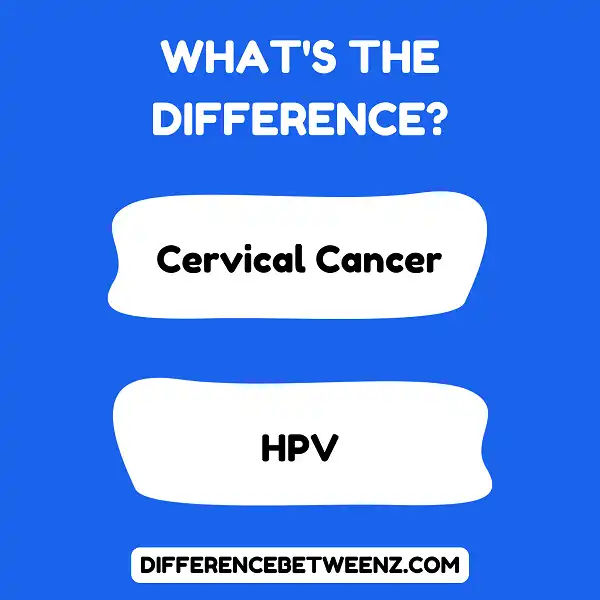Cervical cancer and HPV (human papillomavirus) are two entirely different conditions, but they are often confused or grouped together due to their interrelatedness. Cervical cancer is caused by HPV, making it nearly impossible for the two not to be linked in any conversation about either one. However, although a large percentage of cervical cancers can be traced back to infections with certain types of HPV viruses, there are other risk factors that contribute to this deadly malignancy. In this blog post, we’ll explore the scientific connection between HPV and cervical cancer – delving into symptoms and treatments, while providing useful advice on how you can protect yourself from both!
What is Cervical Cancer?
- Cervical cancer and HPV (human papillomavirus) share some similarities, though they are not the same. Cervical cancer is a type of malignant tumor that begins in the cells on the surface of the cervix, a part of the female reproductive system.
- The majority of cervical cancer cases result from infection with certain types of HPV. However, it is important to keep in mind that not all cases of HPV result in cervical cancer. Cervical cancer is typically caused by persistent HPV infections, while many people with an HPV infection will not develop cervical cancer due to their body’s immune system fighting off the virus.
- Catching HPV is preventable through vaccination, but there are currently no tests available for early detection of cervical cancer; however, regular screening allows for early detection and successful treatment if identified early on.
What is HPV?
- HPV, or human papillomavirus, is a very common virus that can affect the skin and mucous membranes. It’s estimated that nearly all sexually active individuals will acquire HPV at some point in their lives.
- HPV is generally harmless in most cases and doesn’t have serious long-term health effects, however, some types of HPV may cause genital warts or even more serious complications such as cervical cancer. HPV is typically contracted through direct skin-to-skin contact, particularly during sexual activity.
- Fortunately, a vaccine is also available to protect against certain HPV strains. Protecting against HPV could significantly reduce an individual’s risk of contracting the virus and its associated complications.
Difference Between Cervical Cancer and HPV
Cervical cancer and HPV (human papillomavirus) share some similarities, though they are not the same.
- Cervical cancer is a type of malignant tumor that begins in the cells on the surface of the cervix, a part of the female reproductive system.
- The majority of cervical cancer cases result from infection with certain types of HPV. However, it is important to keep in mind that not all cases of HPV result in cervical cancer.
- Cervical cancer is typically caused by persistent HPV infections, while many people with an HPV infection will not develop cervical cancer due to their body’s immune system fighting off the virus.
Catching HPV is preventable through vaccination, but there are currently no tests available for early detection of cervical cancer; however, regular screening allows for early detection and successful treatment if identified early on.
Conclusion
While it is true that most cases of cervical cancer are caused by the HPV virus, there are many other factors that can contribute to the development of cervical cancer. It is important to remember that not all women who have HPV will develop cervical cancer, and there are many things that you can do to reduce your risk of developing this disease. If you have any concerns about your risk for cervical cancer, please talk to your doctor.


